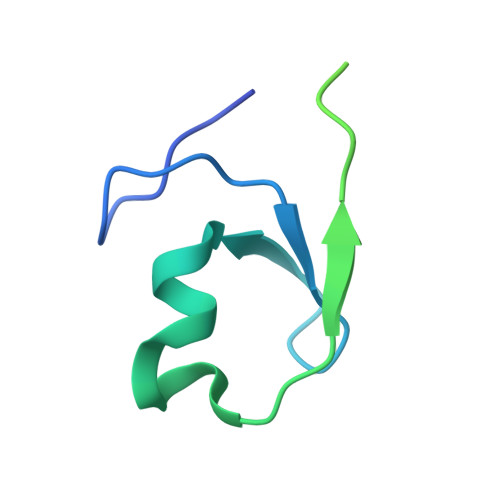Crystal structure of the Trim5 alpha Bbox2 domain from rhesus macaques describes a plastic oligomerisation interface.
Keown, J.R., Goldstone, D.C.(2016) J Struct Biol 195: 282-285
- PubMed: 27402535
- DOI: https://doi.org/10.1016/j.jsb.2016.07.004
- Primary Citation of Related Structures:
5K3Q - PubMed Abstract:
Retroviral pathogens have been an evolutionary pressure for many primate species, driving the development of an intrinsic cellular response to retroviruses and antiretroviral proteins. One such antiretroviral protein is the restriction factor Trim5α, that blocks HIV-1 infection in rhesus macaques at an early post-entry stage in the retroviral lifecycle. Trim5α self-assembles into a large hexagonal array, complimentary to the retroviral capsid. Assembly is mediated by the conserved N-terminal architecture comprising a RING domain, a Bbox domain, and a coiled coil. Recently we have shown that the Bbox domain and elements of the coiled coil form a trimer in solution, and that the Bbox domain drives assembly. During crystallisation experiments using the trimer forming construct, we determined the structure of a dimeric Bbox domain to a resolution of 1.8Å. Interface analysis reveals that residues previously shown to be required for assembly and restriction, Glu120 and Arg121, are central to the interface. Comparison to a mutant Trim5α dimer interface shows a translation of the Bbox dimerisation interface removing interactions important in the wildtype protein.
Organizational Affiliation:
School of Biological Sciences, The University of Auckland, Symonds St, Auckland 1010, New Zealand.





















